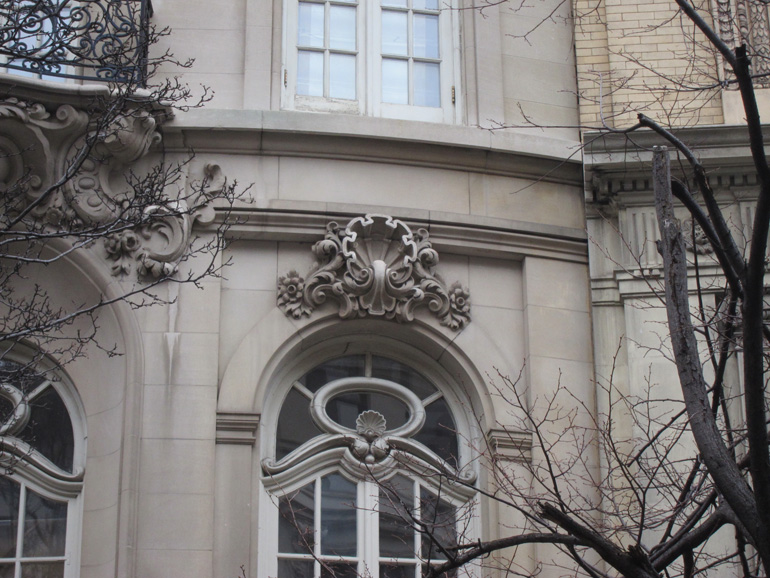Gotham Diary:
Workways
7 February 2013
The recent biography of Cristóbal Balenciaga was not on my reading list. I’m far more interested in the social expression of fashion than I am in the strange people who make fashionable things. But I’m glad that Dot McCleary persuaded me to buy a copy yesterday, when I dropped in to Crawford Doyle to see if they had Lisa Immordino Vreeland’s book about her husband’s grandmother, The Eye Must Travel (they did). “No pressure!” she whispered when I said that I’d take it — all but acknowledging my gently twisted arm. Dot spoke highly of Mary Blume, the IHT reporter and author of The Master of Us All: Balenciaga: His Workrooms, His World. I should have been impervious to the invitation to buy had I not noticed, in recent readings, that, of all the great coutouriers of the last century, Balenciaga stands out as, indeed, the master. A great designer, he was also a highly-skilled sempster, obsessed with the cut of sleeves in a way that had nothing to do with fashion and everything to do with fit. Blume’s deployment of “workrooms” in her subtitle hooked me.
I happen to know a couturière, as well as her favorite client, who happens to be Ms NOLA. You can always tell when Ms NOLA is wearing something that her mother made for her, because it suits her figure in a way that off-the-rack clothes couldn’t. Even a guy with no “fashion sense” whatever would be at least dimly aware of something special. The dresses are always quietly stylish, and would be light-years beyond Ms NOLA’s budget if she had to buy them. They give her that slightly miraculous appearance that Audrey Hepburn has in her gamine roles — how did that girl acquire that wardrobe? But even without the unmistakable glamour, Mom’s dresses are beautiful clothes. Fashion, as I say, has nothing to do with it. (Well, a little, maybe.)
Blume’s book is very much about the serious practice of a craft, and it hardly mentions the extraordinary planetary motions of dress style during Balenciaga’s long career. (He closed his house in 1968.) Since the designer himself was the most private of men, our window on his working world is one of his vendeuses, Florette Chelot — the first person he hired when he set up a studio in Paris in 1936. (The vendeuses were the staff members who sold dresses to their own clients, in competition for commissions, “a horrible way to make a living,” as one of them put it.) Blume got to know this warm but dedicated woman in her later years, and Chelot’s portrait of her boss is admiring but not uncritical. Balenciaga himself seems to have been an expert, if somewhat paranoid, businessman; the Madrid branch kept his models on American women throughout World War II. He launched Courrèges, and provided Givenchy with top craftspeople when the younger man opened his house, but he could well afford such generosity.) For anyone interested in how things are done in the world, The Master of Us All is an engrossing read.
Genius for couture aside, Balenciaga belonged to a familiar type of uneducated but deeply pious Spaniard. As a Basque, he might have been expected to grow up with leftist political sympathies, but his underlying conservatism found harmony in working for the Spanish grandees who began summering in San Sebastián, near Balenciaga’s birthplace, in the latter Nineteenth Century, and who patronised his mother, at whose knee his skill announced itself. (His very last dress was made for Franco’s great-granddaughter.) By lights that we no longer find entirely attractive, Balenciaga was an honorable man, and his first commitment was to his craft. As biographical subjects go, he is fairly rebarbative. But, thanks to Chelot, Blume is able to create a vibrant impression of bygone workways. Â
As well as a bygone way of wealth. One customer with whom Florette got to be good friends was Cécile de Rothschild.
Florette and Cécile shared a passion for gardening and all her life Florette kept a set of gardening tools Cécile had given her. She also gave Florette an insight into the lives of the very rich. “I was always very open with her, more than with the Baroness Alain because she had her outspoken ways. One day I said to her how can you and your friends spend a fortune on a dress that you wear only once, and you aren’t even that clothes-mad. For me it’s fine because it’s how I earn my living, but it seems a little outlandish. She said, Florette, you don’t rrealize that with the life we lead — the servants, the houses, the upkeep — the money we spend on clothes is just a drop in the bucket.
“I had never thought of that,” Florette said.

